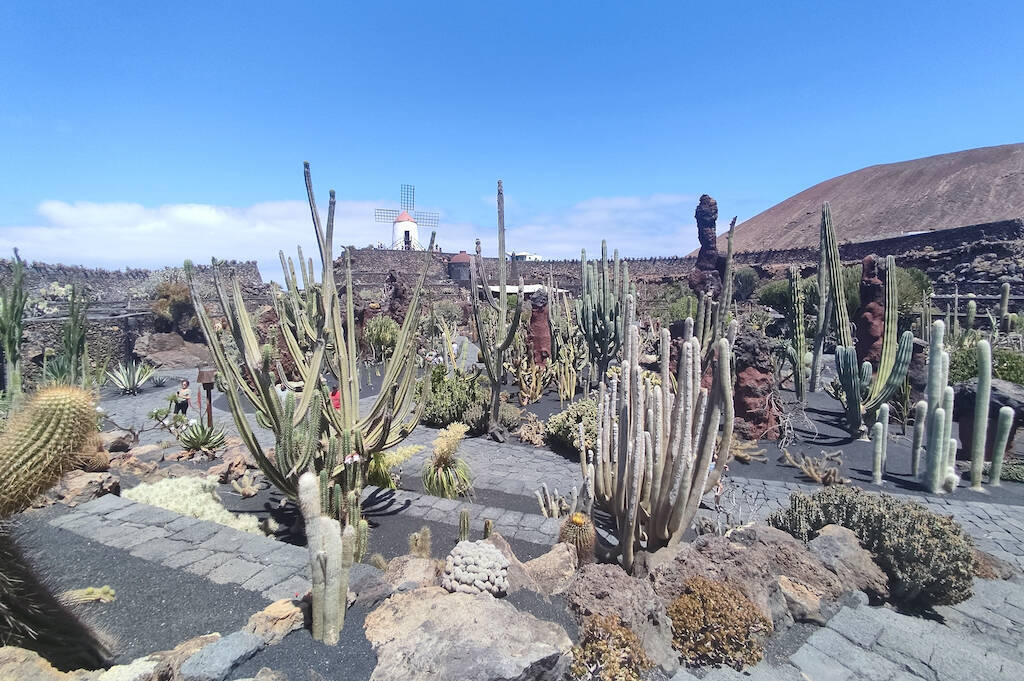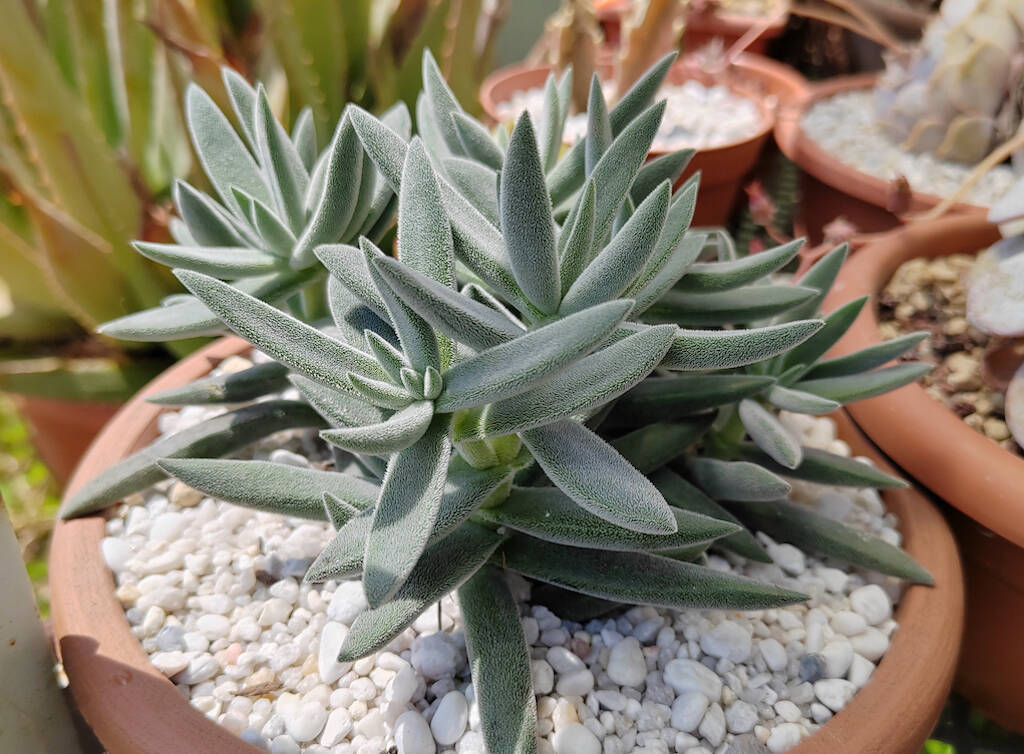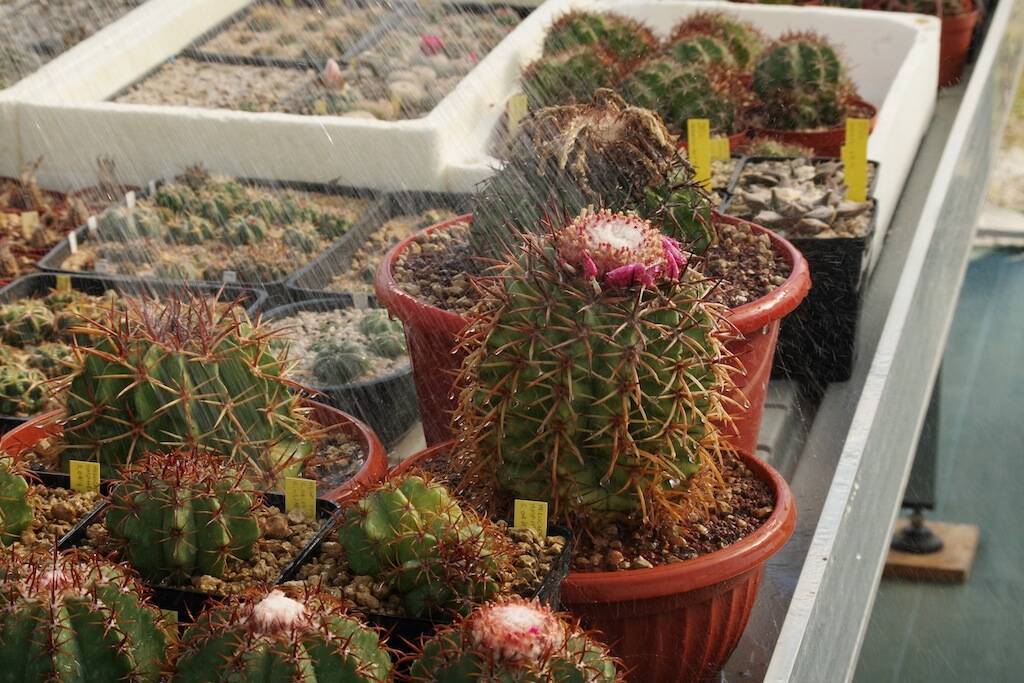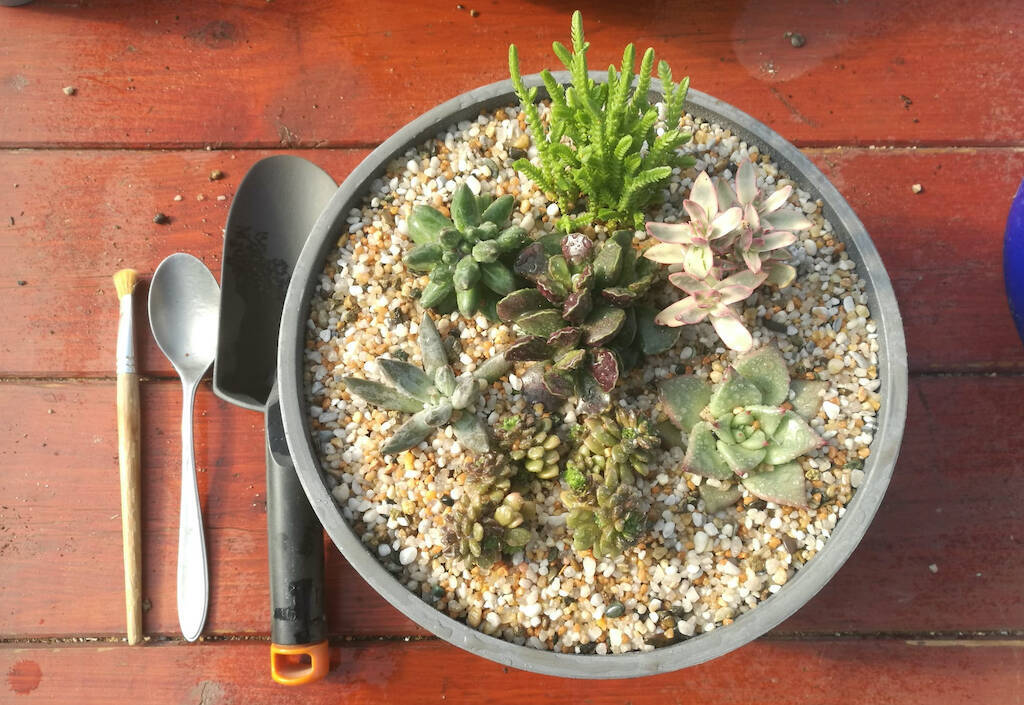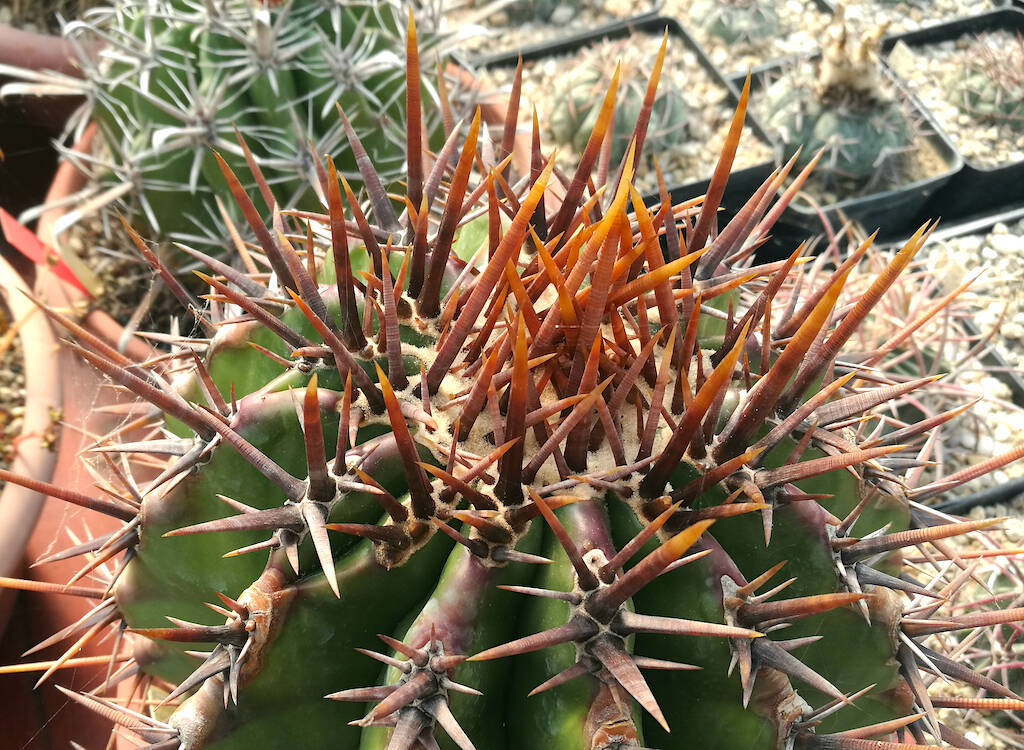Just as we find a wide variability of shapes and colors in the leaves of botanical species in general, which can be flat, fleshy, needle-shaped, ovate, heart-shaped, lanceolate, etc., we find the same variety in the thorns of cacti. Over the millennia, evolution has led to a remarkable range of shapes and colors, with spines that can have a papery or elastic and very fine consistency or, again, appear rigid, squat and short, long and broad, flat or tapered, sharp, hooked, black, gray, white, red, yellow. In general we can say that cacti are the only plants to have thorns, since in other specimens of the botanical world it is not entirely correct to speak of real thorns. Let’s think of the common roses: what we call thorns are actually excrescences that are produced along the stems, alternating with the leaves, which cacti do not have. So what exactly are thorns and how did cacti come to evolve with these “weapons” along the stem? What is the function of the spines in cacti? Why are some pointed while others are hooked? And why are there also cacti that have no thorns at all?
We will answer all these questions in the following article. (…)
Per proseguire nella lettura dell'articolo Accedi o Abbonati
To continue reading the article LogIn or Subscribe


